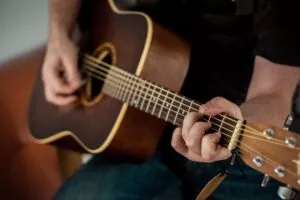
The Best Acoustic Guitars At Any Price
Playing an acoustic guitar has always been a popular pastime. It can be so relaxing to strum a few simple chords, and the sound you get out of an acoustic guitar is second to none. There are countless acoustic guitars on the market, and they can come in all shapes, sizes, and price points. To help you determine which one to buy, we’ve created this buying guide that lists the top acoustic guitars available in Canada.
Our top picks
What to look for in an acoustic guitar
Body Style
Acoustic guitars come in various body styles. The style correlates to the genre of music you want to play. There are six main body types, although there are countless others. Each of the six styles have their own perks. We recommend you research each style to determine which works best for you and your playing style. Here is a table that lists the six main acoustic guitar body styles:
| Body Style | Description |
| Parlor | One of the smallest body types you can buy. The base of the guitar body tends to be more sloped. The shape of this body style makes it easy to play as well as transport. |
| Concert | These are usually small in size, which gives them a bright sound. They are good for beginner players and people with small hands. |
| Grand Concert | This is the larger version of the concert body style. Grand Concert acoustic guitars have a good mid-range tone as well as a stronger sound. |
| Dreadnought | This is one of the most common guitar body styles. Dreadnought acoustic guitars are known for having round bodies with the neck joining the body around the 14th fret. |
| Jumbo | This is the largest acoustic guitar body. Jumbo acoustic guitars have a loud, bold sound that is often described as boomy. |
| Auditorium | This is a mid-sized acoustic guitar. Auditorium acoustic guitars are similar in shape to Dreadnoughts, but they have a smaller width. Auditorium acoustic guitars are designed to fit comfortably on your knee. |
Price: This influences the quality of the guitar. High priced acoustic guitars are often made of better material, have a better overall build, and have a better sound. Budget-friendly acoustic guitars have acceptable builds and sound, but there can be a higher risk of them breaking since they are often made from cheaper material.
Acoustic-Electric: Some acoustic guitars come with hardware that enables you to plug them into an amplifier. These acoustic guitars are often used by people playing concerts in large venues so that their guitar can be heard. You can also use the hardware on acoustic/electric guitars to record music. When deciding between a traditional acoustic or an acoustic/electric, consider the features of each and how you’ll want to use the guitar.
Neck: This category depends on the size of your hands. For people with small hands, a thinner, smaller neck is ideal. People with larger hands are generally not affected by neck thickness and width. Neck thickness and width is based on the size of the acoustic guitar body, as well as the number of frets the neck has. When shopping for an acoustic guitar, we recommend you try out various necks to determine the best size for you.
The Best High-End acoustic Guitar
Martin D-28
The Martin D-28 is a classic acoustic guitar played by many famous musicians like Neil Young, Joni Mitchell, Bob Dylan, and Jimmy Page. And there is a reason for this guitar’s fame and popularity. The sound produced by the Martin D-28 is rich and balanced. You’ll get great bass tones, complimented by clear high notes. According to guitar retailer Long and McQuade, the Martin D-28 is “perfect for the intermediate and advanced player”.
Customers found that the Martin D-28 lived up to its reputation. People thought the guitar sounded great. One customer said that the guitar had a “good bottom end and crisp and clear highs.” Other customers said this guitar was comfortable and easy to play. One person said that the Martin D-28 worked well for both strumming and finger style playing. The only real drawback to the Martin D-28 is its price. Since this is a premier acoustic guitar, the average price will be around $3,000. The other complaints we found were mostly subjective (e.g., the guitar didn’t sound good).
Pros
- Well balanced sound.
- Compatible with various playing styles.
Cons
- Expensive.
Best Acoustic Guitar Under $500
Yamaha FG guitars are one of the most popular acoustic guitar models in the world. This guitar has a simple and traditional look. It also has a well-balanced sound; the guitar’s design produces a loud and strong sound in the low to mid ranges. While some budget guitars have flimsy designs and break easily, you’ don’t have to worry about that with the Yamaha FG. This guitar has a scalloped bracing design that adds strength to its body.
Overall, the Yamaha FG is a great budget guitar. It is also a good option for beginner guitarists. Several customers agreed with these sentiments. One customer said that this guitar had an excellent tone and was “comparable to high end brands in terms of sound and playability.” Another customer said that the Yamaha FG was a “budget-oriented guitar which is playable”.
One customer complained that the guitar did not come with button for a guitar strap. However, the person admitted that this was minor grievance; it would have been convenient if the guitar came with the button. Another customer said that people may need to make minor adjustments to this guitar. For this person, they had to polish the frets.
Pros
- Good for players at all levels of experience.
- Comparable to high end acoustic guitars.
Cons
- Adjustments to the guitar may need to be made.
The Best Acoustic Guitar for Beginners
Donner Acoustic Beginner Guitar
For people just starting to learn acoustic guitar, this instrument is a good option. This Donner Acoustic Guitar comes with several accessories, such as: a padded gig bag, guitar strap, digital clip-on tuner, capo, pickguard, extra pack of strings, truss rod, four guitar picks, and a cloth. These features are not only convenient, they help you save money.
The dreadnought body of this guitar, made of spruce top mahogany, is durable and solid. It is designed to create a rich, bright sound that is also well balanced. The Donner Acoustic Guitar is also designed to stay in tune. The metal alloy tuning pegs and phosphor bronze strings makes it easy to tune this guitar and keep it in tune. Lastly, the Donner Acoustic Guitar has a smooth fretboard that lets you easily slide up and down the neck.
Many customers said this instrument was a great beginner acoustic guitar. The neck was comfortable, which also made it easy to play. Sound was another positive noted, with one customer saying that the “sound is great for the price”.
While many people liked the simple features of this guitar, some said those who are serious about playing will want to upgrade to a better instrument. Overall, these customers said that the Donner Acoustic Guitar is great for beginners, but intermediate or advanced players should look for something more on the higher end.
Pros
- Great for beginners.
- Easy to play.
Cons
- Intermediate/advanced players may find this guitar lacking in overall quality.
Best Acoustic/Electric Guitar
Epiphone J-200
As mentioned earlier, some acoustic guitars have electric hardware installed. This provides the player with various features/perks, such as an increased volume. We found that the best acoustic/electric guitar available is the Epiphone J-200. This jumbo style acoustic/electric guitar has a solid spruce top body. It also has Grover Rotomatic machine heads that make it easy to tune this guitar. The guitar has a Fishman Sonitone pickup system, which lets you plug the guitar into an amplifier.
Many customers liked the sound quality for “both electric and acoustic” modes. Many more people said the Epiphone J-200 sounded great when plugged into a guitar amplifier. Other positives listed by customers were playability, build quality, string height (action), and the design. Lastly, people liked the price for the Epiphone J-200, with several saying that it was a good price point for a jumbo style acoustic guitar. One customer summed it up by saying this guitar had “good value for the money”.
We could not find many complaints about the Epiphone J-200. Again, most were subjective issues, such as “I did not like the sound of this guitar”.
Pros
- Good sound quality.
Cons
- N/A.
The best 12 string acoustic guitar
Before we dive into our picks for this category, let’s first look at what 12 string acoustic guitars are. So far, the acoustic guitars in this buying guide have six strings. And most acoustic guitars you’ll find online and in music store only have six strings. However, there are acoustic guitar models that come with 12 strings. The additional strings produce a thicker, more ringing tone. To accommodate the extra strings, these guitars have wider necks. The extra strings also create higher string tension. Playing a 12 string acoustic guitar can be tricky. You have to be more delicate in the placement of your fingers and in the way you strum and pick the strings. Therefore, 12 string guitars are suited for intermediate and advanced players. Even though playing a 12 string acoustic guitar can be hard, the upside is worth it. The amazing tone is the reward you get for playing the instrument.
One final note: Users on the subreddit r/guitars recommend players stick to higher end 12 string guitars. The reasoning being that budget 12 string acoustics tend to have a poor build quality.
Now let’s look at our pick for the best 12 string acoustic guitars, the Taylor 150E.
Taylor 150E
The Taylor 150E is an acoustic/electric 12 string guitar. The dreadnought body of this guitar is designed for a low-end tonal response. According to the product description, the tone of the Taylor 150E is “lush and articulate” with “lots of dynamic range”. In addition, the guitar has a slim, playable neck. Customers agreed with the sound and comfortability of the Taylor 150E. People said the neck felt comfortable, which made the guitar easy to play. In terms of sound, one customer said the guitar had a “sparkle sound” with lots of clarity at the bottom end. Lastly, people thought the Taylor 150E was well made, beautifully crafted, and had an amazing sound.
The only drawback for this guitar is the price. It’s the second most expensive guitar on this buying guide at $1,199. Therefore, we don’t recommend this guitar if your budget is tight. With that being said, the Taylor 150E is more affordable than other higher end 12 string acoustic guitars.
Pros
- Sound has lots of dynamic range.
- Slim, playable neck.
Cons
- Expensive.
Best Acoustic Bass
Fender Kingman Acoustic Bass
Acoustic basses may not have the popularity of acoustic guitars, but they are still an enjoyable instrument to play. The Fender Kingman acoustic bass resembles a traditional electric bass. The version we picked comes in a beautiful black gloss finish. This acoustic bass has a comfortable playing feel which is achieved through its cutaway body. This design allows you to access the higher frets. In addition, this acoustic bass is slightly shorter than other models. This gives the Fender Kingman a slinkier playing feel, and it’s easier to transport. In terms of sound, the Fender Kingman delivers a full, deep acoustic projection. This is an important quality. According to several users on r/guitars, most acoustic basses struggle to project when not plugged into an amp. And because this bass is an acoustic/electric model, you can plug it into an amp for even better tones.
Customers agreed that the Fender Kingman has a great sound. One customer noted that this acoustic bass “really projects well and has a great tone plugged and unplugged”. People also agreed that this acoustic bass was comfortable to play, with several people stating that the bass suited multiple playing styles. Lastly, the design of the Fender Kingman was popular with people.
Pros
- Suites various playing styles.
- Great sound/good projection.
Cons
- N/A.
Our methodology
For this buying guide, we spent over eight hours researching acoustic guitars. We only considered guitars rated four or more stars. Our team read several customer reviews to get a sense of what people want in a good acoustic guitar. When we needed specific information on acoustic guitars, we referenced trusted websites. Lastly, we based our picks on the playability, tone, and price of the acoustic guitar.
Frequent acoustic guitar questions
What are the best acoustic guitar brands?
This question is slightly subjective because some people prefer one brand’s acoustic guitar over others. However, we found that the four best acoustic guitar brands are:
- Gibson
- CF Martin & Co
- Taylor Guitars
- Yamaha
Through our research, we discovered that these four acoustic guitar brands were the most popular among consumers.
How much does an acoustic guitar cost?
The price for an acoustic guitar can vary. For budget friendly acoustics, the price averages between $200-$500. Higher end acoustic guitars typically cost between $1,000-$5,000.
How do you tune an acoustic guitar?
Tuning an acoustic guitar is a fairly easy task. Before you start, we recommend you purchase a guitar tuner. You can tune your acoustic strictly by ear, but using a tuner is easier, more convenient, and it is more accurate.
The first step is to play one of your acoustic guitar’s strings. As you play, your tuner will indicate which note the string is tuned to. Next, turn the string’s tuning pegs located on the guitar headstock as you continue to play the string. As you’re doing this, you’ll notice the string’s sound will start to change. The tuner will also show you the string’s pitch changing. Continue to do this until you’ve tuned the string to the desired note. Repeat this step for the other five strings.
Note: the standard tuning for an acoustic guitar is E-A-D-G-B-E.
Here is a great video on how to tune an acoustic guitar:
How do you string an acoustic guitar?
This skill is important if you have to repair a busted string, or you want to change the existing set of string on your acoustic guitar. Below are the steps to follow when stringing an acoustic guitar:
- Gather your materials: Here the main materials you should have when stringing an acoustic guitar: a new set of strings, a tuner, a string winder, and a pair of wire cutters.
- Choose your work surface: Ideally, you’ll want to work off a solid, flat platform. You should also secure the guitar neck so that it doesn’t move around as you work. Guitar In Demand recommends using polystyrene to secure the neck since it’s soft and can adapt to the shape of the neck.
- Loosen the string tension: Next, start to loosen the tension on each string. You do this by turning the corresponding tuning peg until you notice the string begin to loosen. Once you’ve loosened the strings, remove them from the headstock.
- Remove the Bridge Pins: Once you’ve removed the strings from the headstock, take out the bridge pins. If you have string winder, use the notch to remove the pins. Slowly pull the pin from the bridge. Some pins may be harder to get out, so patience is key. Once the pin is removed you can take fully take out the string from the acoustic guitar.
- Place the new strings: Now you can place your new strings into the bridge hole. To do this, insert the string into the bridge pin groove. Aim to place the bridge pin and string into the hole together. As your placing the bridge pin into the hole, pull the string at the same time. This will help secure a tight hole.
- Thread the string through the tuning post: Pull the string to its corresponding tuning post. Insert the string into the tuning post hole. Thread the string towards the middle of the headstock.
- Tighten the strings: If you have a string winder, use it to tighten the strings.
- Tune the strings: Once you’ve tightened the strings, you can now start to tune the strings.
Lastly, cut the excess part of the string that is sticking out of the tuning peg.
Here is a great video that summarizes the above steps:
Read more
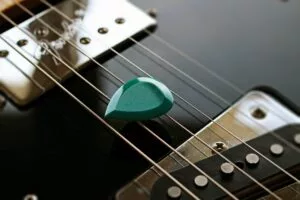
The Best Guitar Picks in Canada
A good guitar pick is essential for any guitar player.
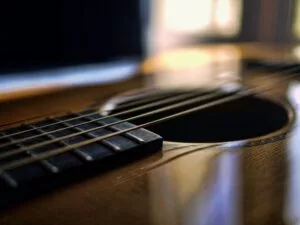
The Best Guitar Strings in Canada
Guitar strings are integral to how a guitar sounds and plays. Choose the best strings for your axe here.

Tabletop Gaming: An Introduction
More than just D&G! Tabletop RPGs are a great way to spend time with friends away from the screens.

The Best Karaoke Software
Party like it’s 1999 with karaoke!
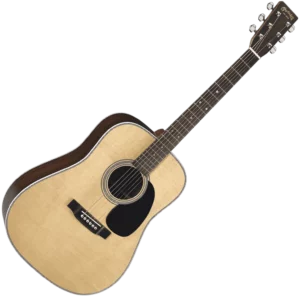
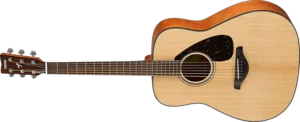
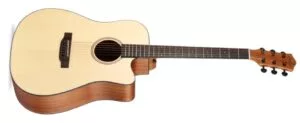

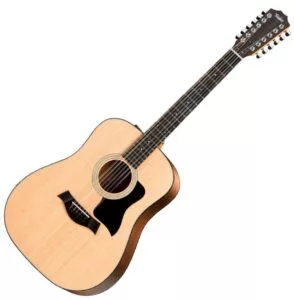

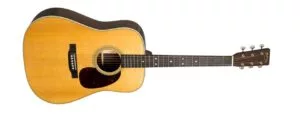
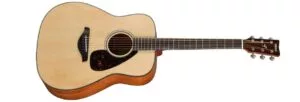
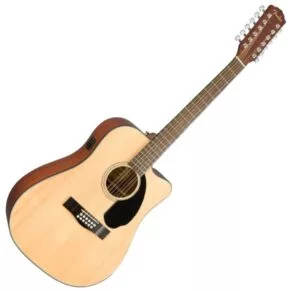
cw6xyi
gpp9dc